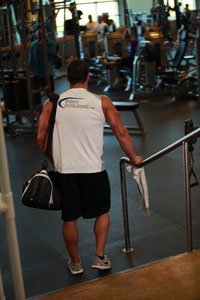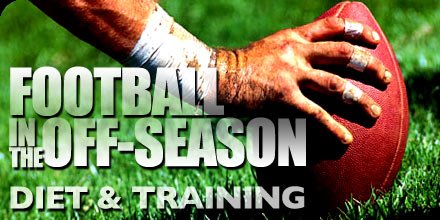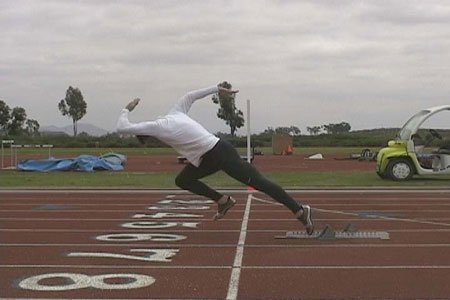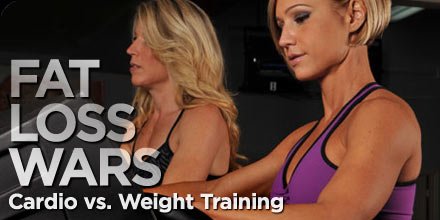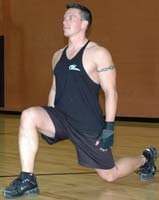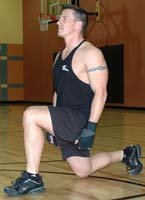Article Summary:
|

Athletic Vs. Bodybuilding Training
Spot The Differences!
When you step foot into the gym, there are a variety of different types of people in there training. You have those who are just looking to get bigger - they want more muscle mass and then some.
Then you have others who are there to stay in shape, but also for socialization reasons - they look forward to their workouts because it's a chance to get out and be around others who have a passion for exercise.
Then you also have the crowd who may be looking to get bigger as well, but they have an ulterior purpose for this apart from aesthetics - they are training for some type of sport.
The vast majority of those who are involved in athletics will spend some time during the off-season (and in some cases during the on-season as well) in the weight room. Building up muscle tissue will help them with their power, speed, blocking ability, and in some cases, depending on the training you are doing, agility as well.
| RELATED ARTICLE | |||
|
Author: J.P. |
To the onlooker, training for athletics and training for size may look similar, but there are some important differences that you should note between the two training goals. If you plan to train for either one of these, it's important that you understand the best methods that will get you the results you're looking for.

Program Design Set-Up
- The first thing that will change when you're comparing bodybuilding
- with athletic training workout programs is the overall set-up and design of it. Due to the fact that most athletes are also participating in training sessions and practices for their sports, it's to be expected that the total number of gym sessions will be reduced.
They can't spend off days recovering from hard lifting sessions if they are expected to perform optimally on the field or court, therefore you have to be especially mindful about total rest when planning a program for athletic training.
|
|
|
|
|
- Typically it will be better to adopt a full-body workout program that is to be performed twice a week, which is still a high enough frequency to show good improvements in muscle
- , but will also allow plenty of time for recovery and other training.

Quickness Training
- While most bodybuilders focus their priority on lifting a maximum amount of weight, there are many athletes who also really want to try and obtain a
- with their training. They're less concerned with being strong as they are with being fast, since generating that speed is what will help them reach higher levels in their designated sport.
- As such, these individuals will want to focus less on increasing the weight on the bar, and instead focus on pressing the weight faster and faster as time goes on.
This is not to mean they should drop the weight way down so they can just fly through their sets - you still want to keep a high amount of tension on the weight stack since that will help build power behind that speed.
It's developing a fast force action that's more essential in this scenario.

Body Fat Maintenance
- Another aspect of training, more on the
- side, which will become a very large difference between those who are training for sport is
- maintenance.
- Many people focused on muscle building also want to stay somewhat leaner while they are working toward building more mass (while others could care less and pack on both the muscle and the fat), but with athletes, they may be required to maintain a certain standard as far as body fat levels go otherwise it may start to influence their overall performance.
Due to this fact, the athlete may be required to build muscle at a slightly slower pace so that they keep their body fat levels under control.
At times the athlete may also need to enter an actual fat loss phase in order to lean up as this will help with speed and quickness too. When in a fat loss phase for athletic training, taking into account total volume will be even more critical because they won't be able to handle both heavy sport training workouts and heavy gym training workouts.
| RELATED ARTICLE | |||
|
Author: Shannon Clark |

Sport Specific Movements/Isolation Work
- Finally, the last difference between athletic workouts and bodybuilding workouts will be the primary focus for the
- and exercise selection decisions.
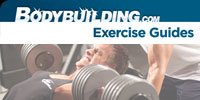 |
Exercise Database Search for exercises and learn the correct form with picture and video guides! Get the best results possible and stay safe while lifting. There are many ways to find exercises using our new and improved exercise database. [ Check Out The Database Here ] |
- In most cases, a bodybuilder attempting to build up as much
- and
- as possible will be focusing on compound movements. They may do some isolation work, but it will be more limited since those exercises simply don't allow you to lift as heavy as you could be and don't stimulate as many muscle fibers.
With athletic training though, you will want the exercises you're performing in the gym to mimic movements that you execute in the sport, so there may be a need for isolated or sport-specific exercises instead.
This could be standard isolate exercises such as triceps extensions, cable curls, leg extensions, and so on if greater strength is needed within those single muscle groups, or it could be alternative exercises that incorporate a plyometric aspect to them or use bands, cables or weighted vests.
| RELATED PRODUCT | ||
|
- Many high performance sports training coaches have a wide library of exercises they use with the athletes they train, so if you are looking to reach a high level in your sport, you may want to consider a trainer who is specialized within this specific sport industry.
So be sure you keep these points in mind as you go about designing your workout training program. The differences at times can be hard to notice, but they will have an impact on the types of results you get from the training. Below you'll find two workouts to illustrate this further.

Full Body Workout For Bodybuilding
- Squats: 4 sets of 6 reps
- Bench Press: 4 sets of 6 reps
- Bent Over Rows: 4 sets of 6 reps
- Hamstring Curl: 2 sets of 8-10 reps
- Shoulder Press: 2 sets of 8-10 reps
- Calves: 2-3 sets of 12-15 reps
- Decline Weighted Ab Sit-Up: 2 sets of 15 reps

Full Body Athletic Training For Power
- Leg Press: 3 sets of 8 reps with a 1:3 tempo
- Medicine Ball Chest Pass: 3 sets of 10 reps with a 1:3 tempo
- Weighted Vest Pull-Ups: 3 sets of 8-15 reps
- Jump Squats: 2 sets of 10 reps (can hold a medicine ball for added intensity)
- Kettlebell Push-Press: 2 sets of 8-10 reps
- Weighted Vest Walking Lunges: 2 sets of 15 reps
- Hanging Leg Raises: 2 sets of 12-15 reps
- Kettlebell Turkish Get-up (Squat Style): 2 sets of 10-15 reps
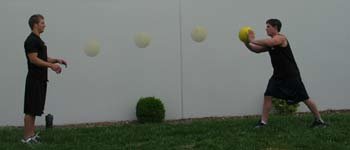
 Click To Enlarge.
Click To Enlarge.
Medicine Ball Chest Pass.
Video : Windows Media - Real Player

